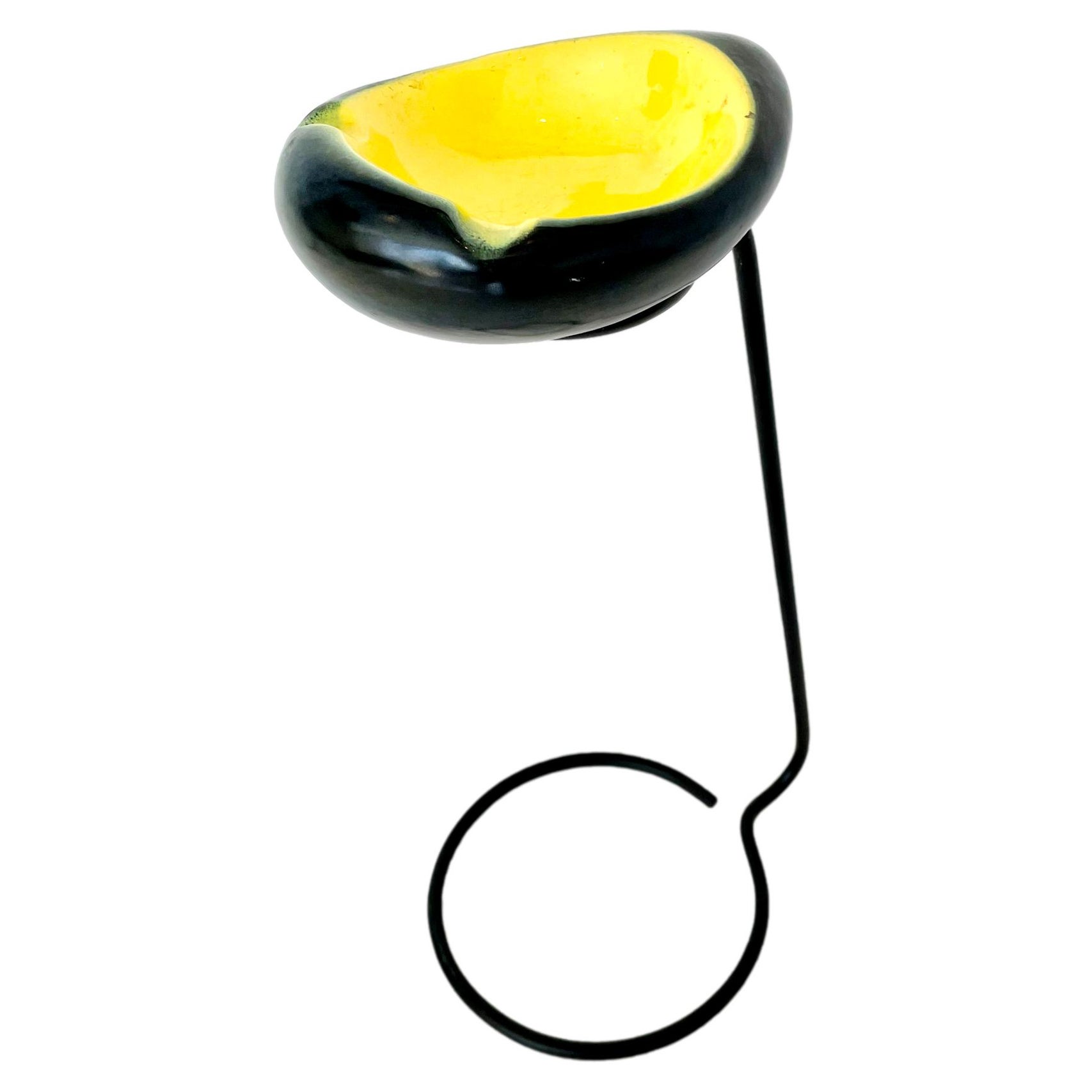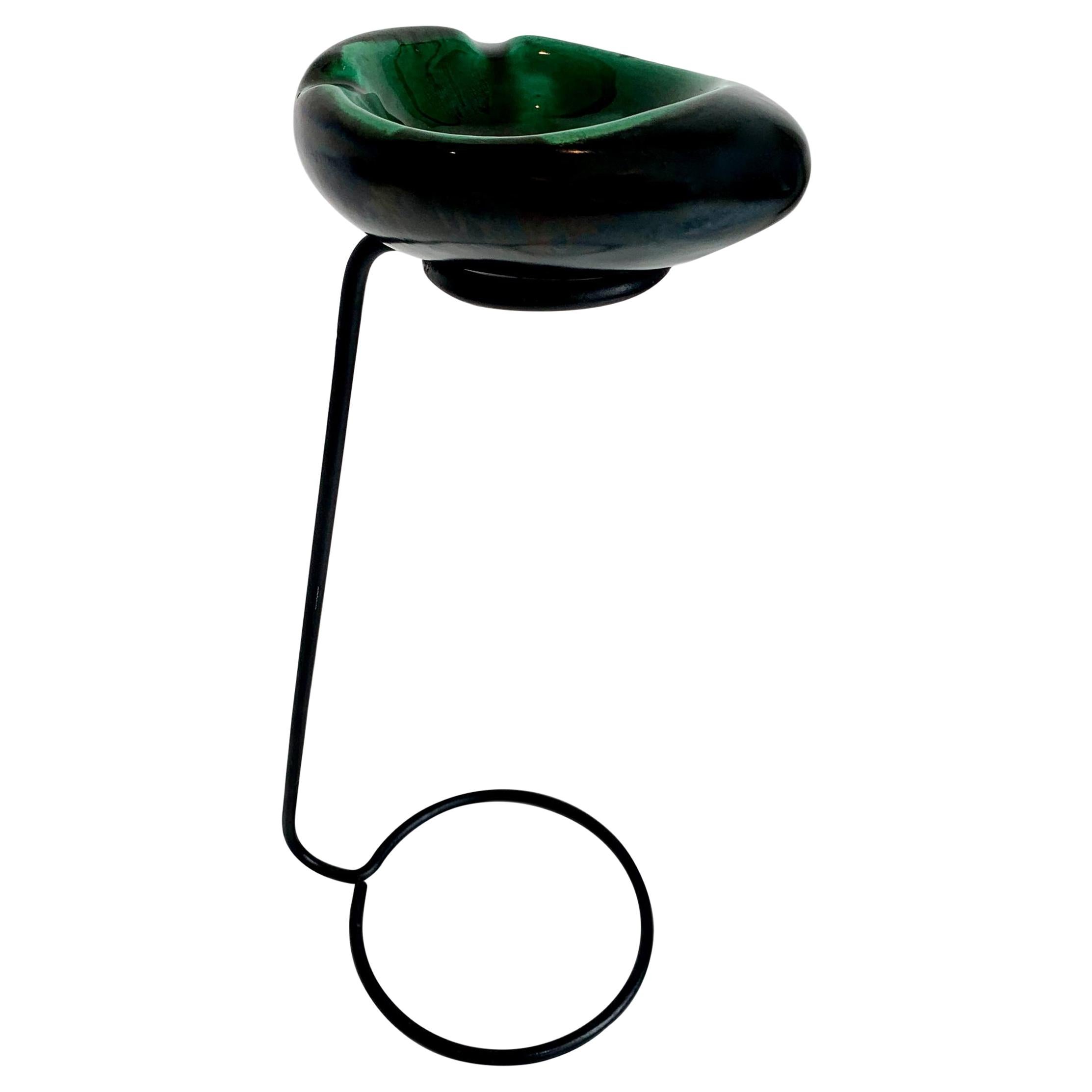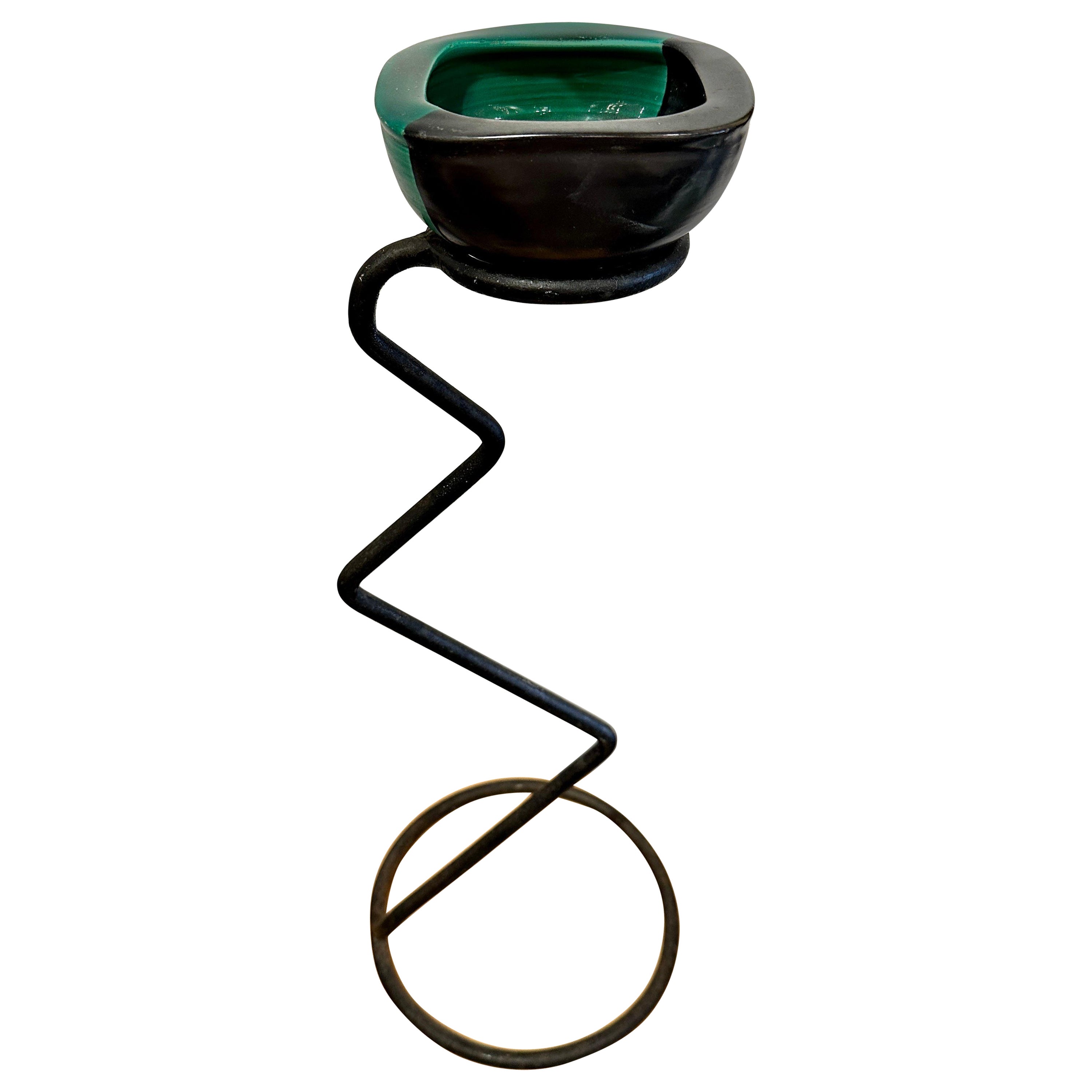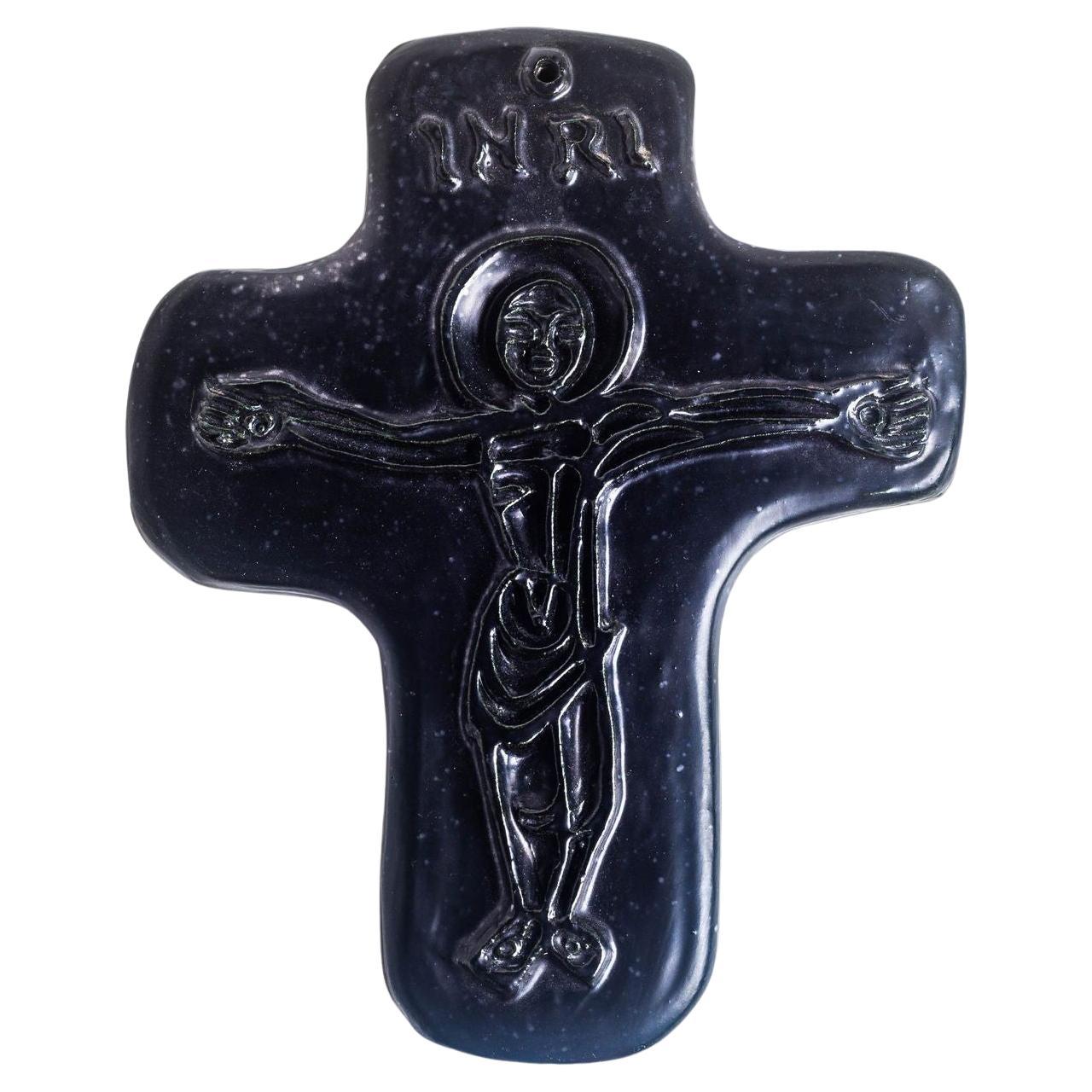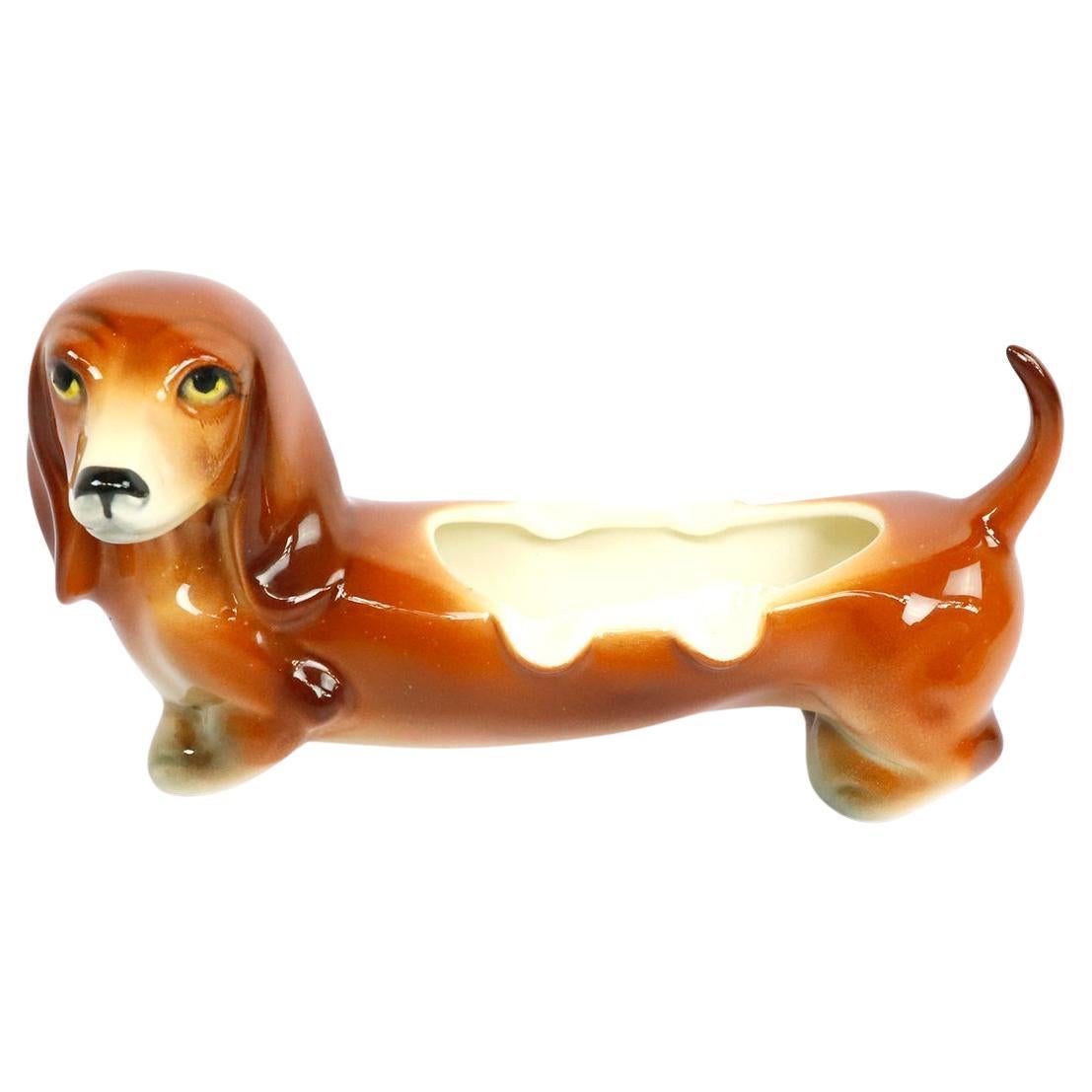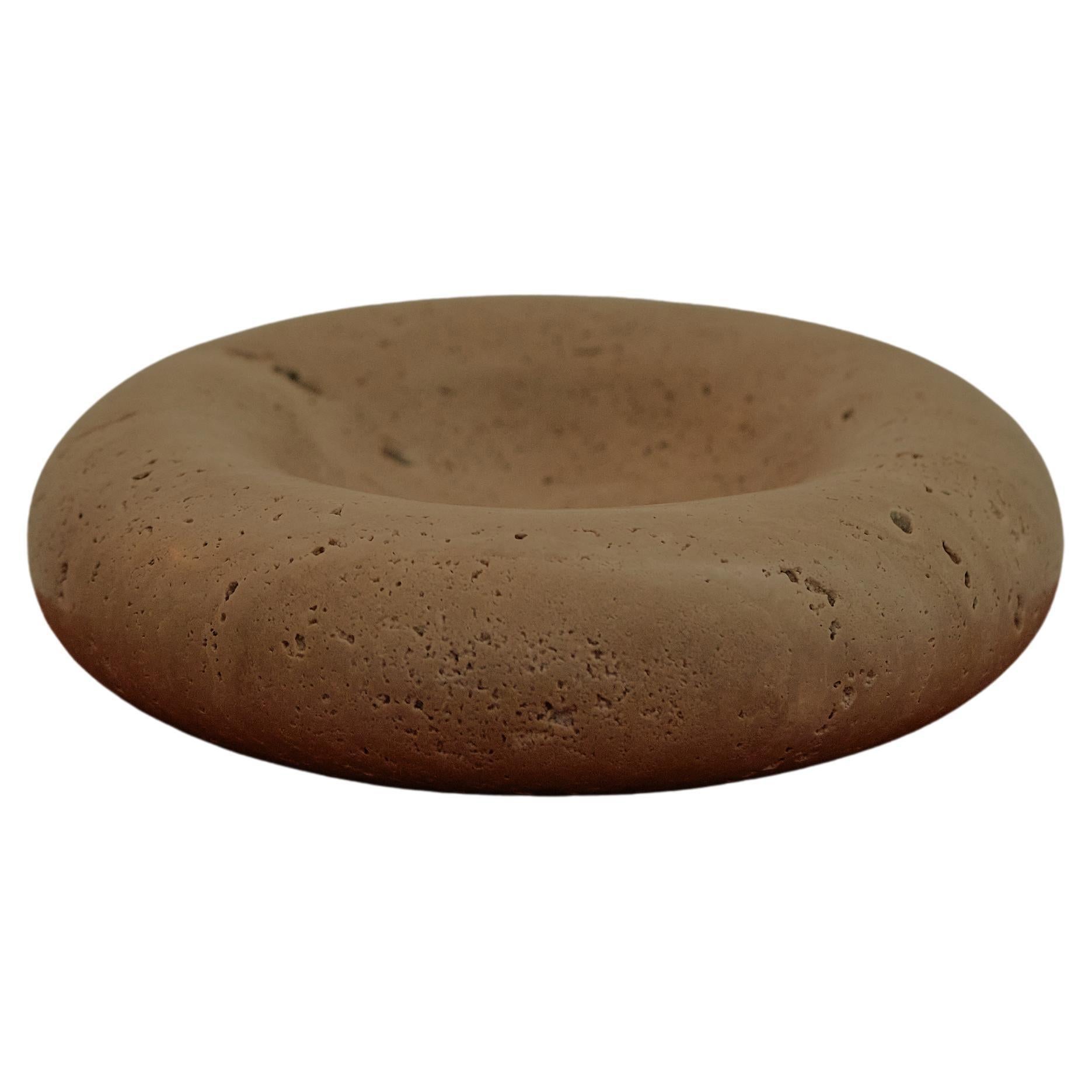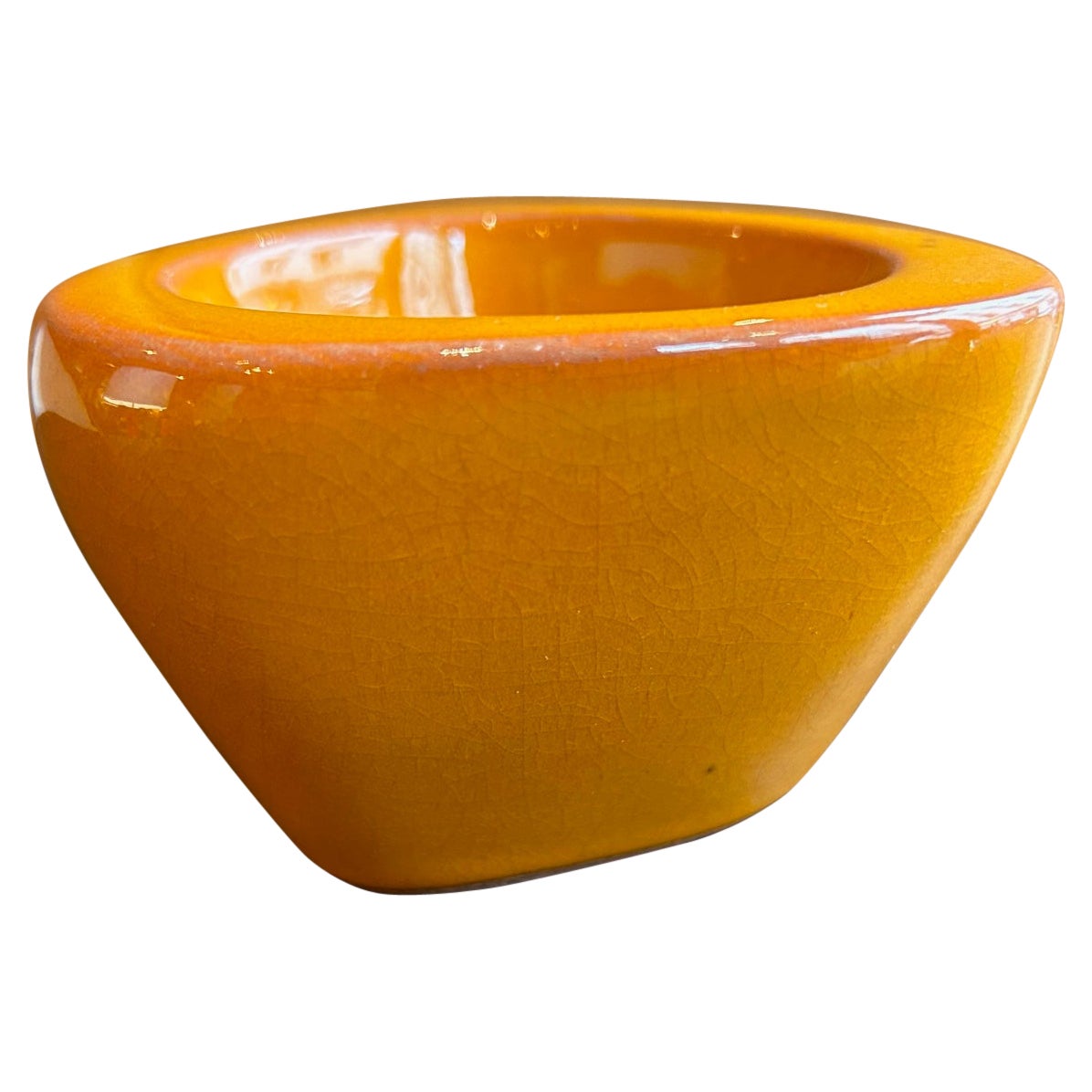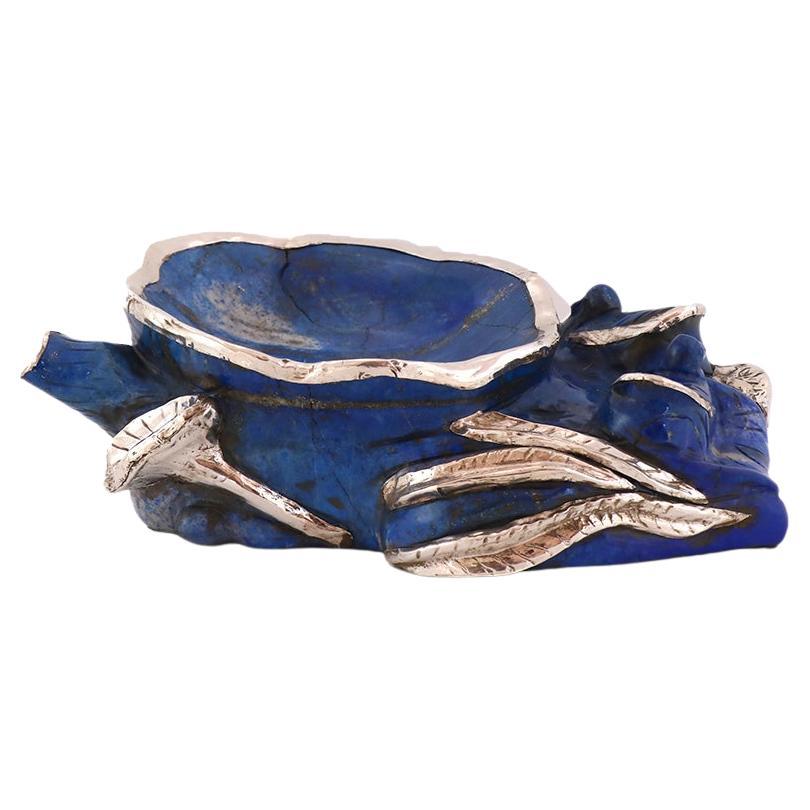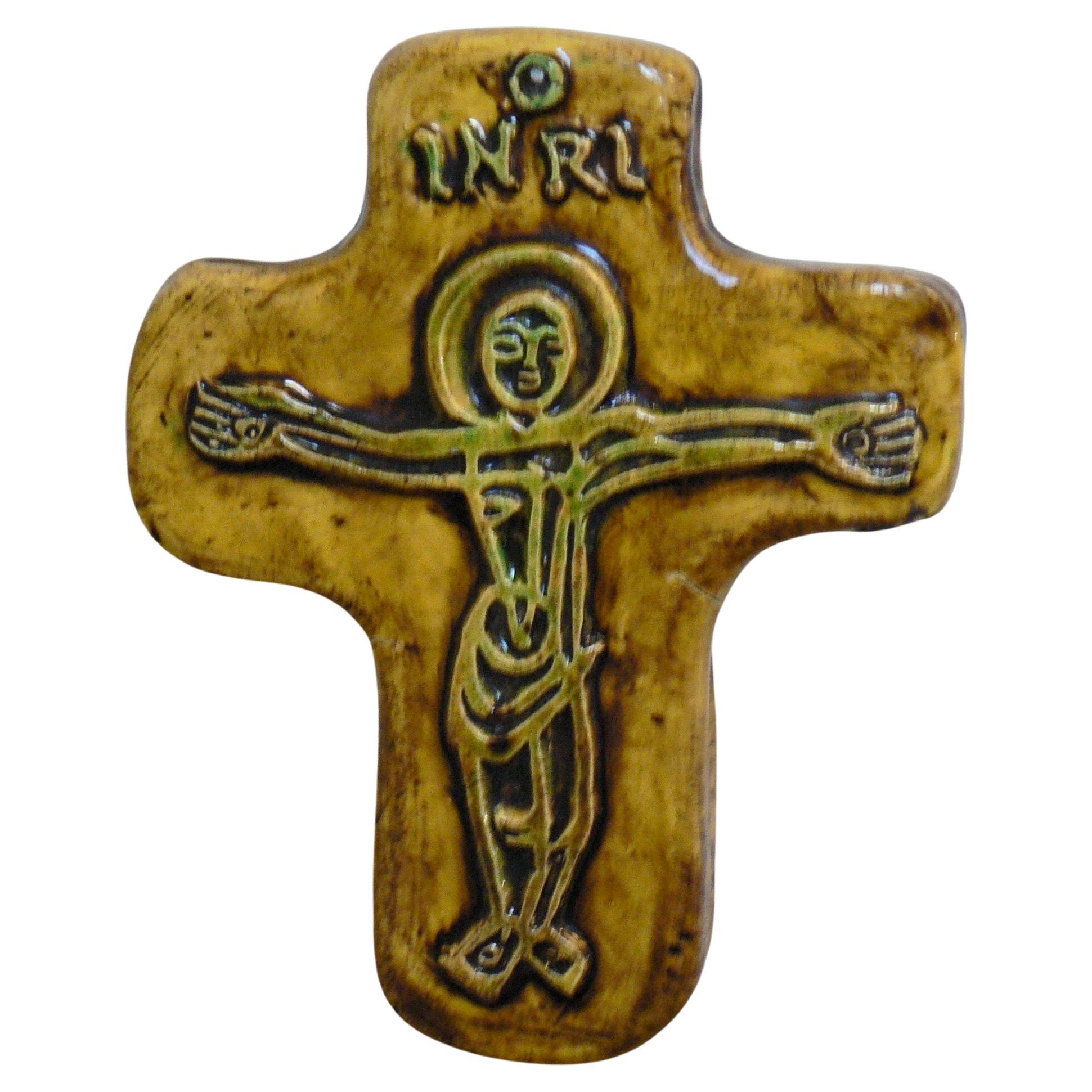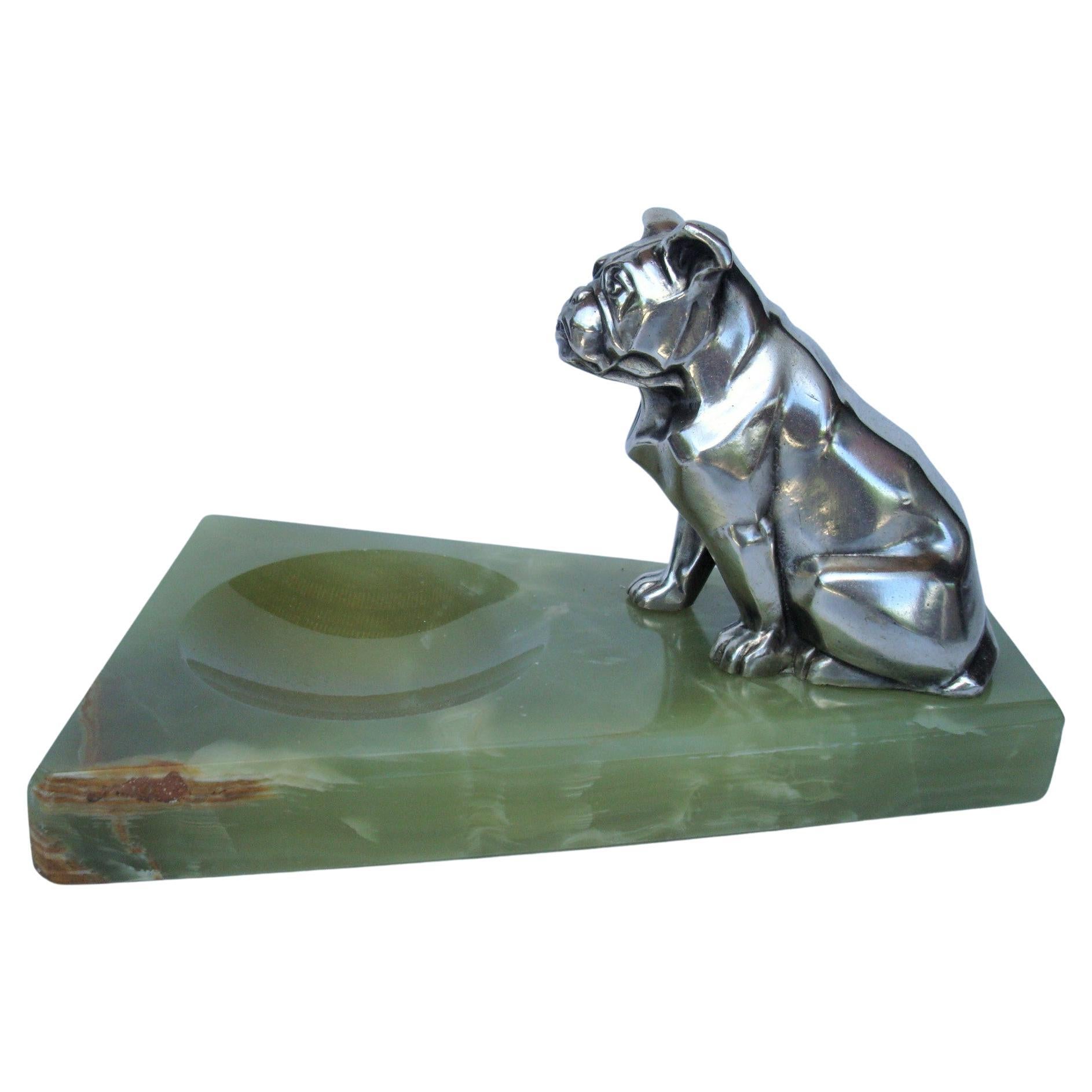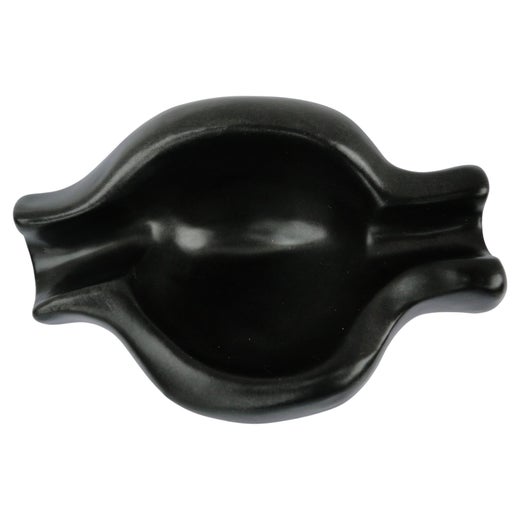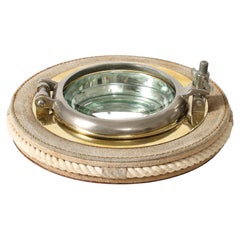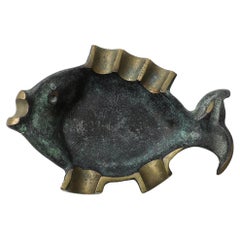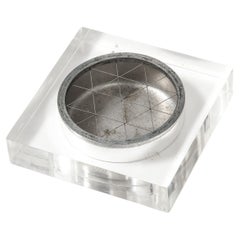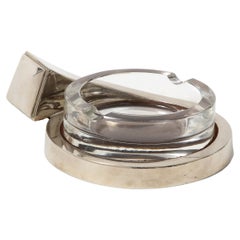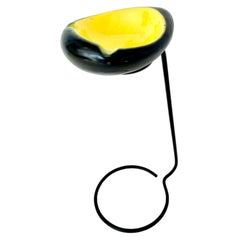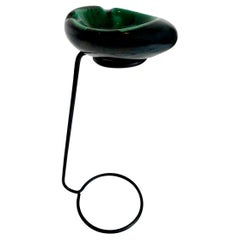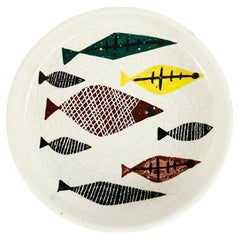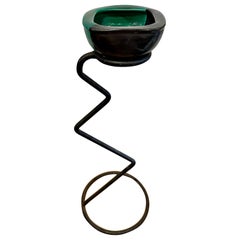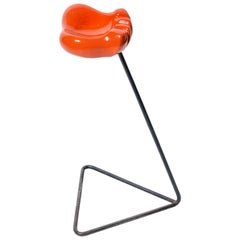
'Bear Paw' Ceramic Ashtray with Metal Base by Georges Jouve & Mathieu Matégot
View Similar Items
'Bear Paw' Ceramic Ashtray with Metal Base by Georges Jouve & Mathieu Matégot
About the Item
- Creator:Georges Jouve (Designer),Mathieu Matégot (Designer)
- Dimensions:Height: 24 in (60.96 cm)Width: 12 in (30.48 cm)Depth: 12 in (30.48 cm)
- Materials and Techniques:
- Place of Origin:
- Period:
- Date of Manufacture:1950s
- Condition:
- Seller Location:New York City, NY
- Reference Number:Seller: ACC11151stDibs: f916518030810090651fs
Georges Jouve
Georges Jouve was a modern-era ceramicist with a tirelessly creative spirit. He began his career creating vases and other utilitarian vessels but soon renounced anything produced on a pottery wheel in favor of modeling and sculpture techniques. Forms found in nature inspired him to create unusual pieces — large cups that rolled up like vast seashells, curiously stylized birds — all springing from an alert imagination. He left an indelible mark as an unconventional ceramist.
Jouve was born in France, in 1910, to a family of decorators. At 17, he enrolled in the Ecole Boulle in Paris, where he studied sculpture. After graduation in 1930, he became a theater-set designer to help support his new wife and family. He only dabbled in ceramics when he had time — and that time did not present very often.
During World War II, Jouve was interned in a German forced-labor camp for his political views. He eventually escaped and hid at his stepparent’s home in southern France — where he indulged in his passion for ceramics to pass the time. In 1944, after the Germans left Paris, he returned to the city and pursued his dream of opening a ceramics studio.
Jouve’s work caught the eye of furniture designer Jacques Adnet, who asked him to participate in the Contemporary Ceramics Exhibition, which was hosted by a decorating and publishing house founded by architect Louis Süe and painter André Mare. His work was warmly received, and his pieces began to sell.
From there, Jouve started to participate in numerous exhibitions. At the 1947 Urban Planning Exhibition in Paris, he won a silver medal for a wall covering. His work was then displayed at several international traveling exhibitions presented by the French Ministry of National Education and Ministry of Foreign Affairs, from 1947 to 1950.
In 1954, Jouve left Paris to set up workshops in southern France, where he concentrated on ceramics research and new techniques. His experimentation resulted in breathtaking pieces that other artists have attempted to copy for decades.
On 1stDibs, find Georges Jouve serveware, ceramics, pitchers and more.
Mathieu Matégot
With their curvaceous metal surfaces and shapes often resembling sheets of folded paper, Mathieu Matégot's inspiring furniture and lighting designs are easily recognizable and highly sought after by collectors. By working with perforated sheet metal and metal tubing, the Hungarian-born French architect, artist and designer — who is known by aficionados for his “rigitulle” technique — created tables, chairs and decorative objects that are celebrated works of French modernism and make a statement in any interior.
Matégot attended the Budapest School of Fine Arts and Architecture. He graduated in 1929 and traveled before settling in Paris in 1931, where he worked as a window dresser for department stores and as a set designer for cabaret halls.
In 1939, Matégot joined the French army in resistance to invading Nazi forces. He was soon captured and sent to work in a German factory. It was at this factory where Matégot became familiar with the materials and techniques that would inform and inspire his trademark rigitulle method.
After the war ended, Matégot opened a workshop in Paris and began to create handcrafted furniture that didn't conform to established styles of the time. Matégot explored merging traditional and non-traditional materials — he worked with formica, glass and natural materials such as rattan — and engaged in other forward-looking experiments. Matégot soon patented his career-defining rigitulle technique and material, which saw the designer working with metal tubing and perforated metal sheets and producing thin, airy folds into the metal as if he were manipulating fabric or paper.
Many of Matégot’s designs for table lamps, pendants, tables and more are reflective of the rigitulle technique, but the best-known work that exemplifies this process is his elegant three-legged Nagasaki chair, which he exhibited in 1954 at the Salon des Artistes Décorateurs. The original Nagasaki chair gave way to a collection that included a stool and an armchair. Matégot’s Nagasaki dining chair has been reissued by Gubi and is part of the permanent collection at the Vitra Design Museum, which is home to one of the world’s most important furniture collections.
Matégot created a range of smaller items for the home — serveware, side tables and magazine racks, each distinctive in their fluid and organic forms — but halted his career in design and moved to Angers in the early 1960s in order to turn to creating art. Today he is known for his abstract tapestries as well as his furnishings.
Find vintage Mathieu Matégot furniture on 1stDibs.
More From This Seller
View All20th Century Italian Ashtrays
Brass, Steel
Vintage 1960s Ashtrays
Brass
20th Century Ashtrays
Steel
Vintage 1970s Italian Modern Ashtrays
Silver
20th Century Italian Modern Ashtrays
Glass
20th Century American Modern Ashtrays
Iron
You May Also Like
Vintage 1950s French Decorative Dishes and Vide-Poche
Iron
Vintage 1950s French Decorative Dishes and Vide-Poche
Iron
Vintage 1960s Mexican Mid-Century Modern Animal Sculptures
Ceramic
Vintage 1950s French Mid-Century Modern Decorative Dishes and Vide-Poche
Metal
Vintage 1960s German Hollywood Regency Animal Sculptures
Ceramic
Vintage 1950s French Mid-Century Modern Mounted Objects
Earthenware
Recently Viewed
View AllRead More
Who Were Guillerme et Chambron? French Veterans of WWII with a Knack for Clever, Quirky and Livable Furniture
Their charming solid-oak pieces offer homes utility and comfort.
Robert Stilin’s Interiors Are Infused with a Laid-Back Sophistication
The New York City– and Hamptons-based designer creates deeply layered interiors that project warmth and comfort.
